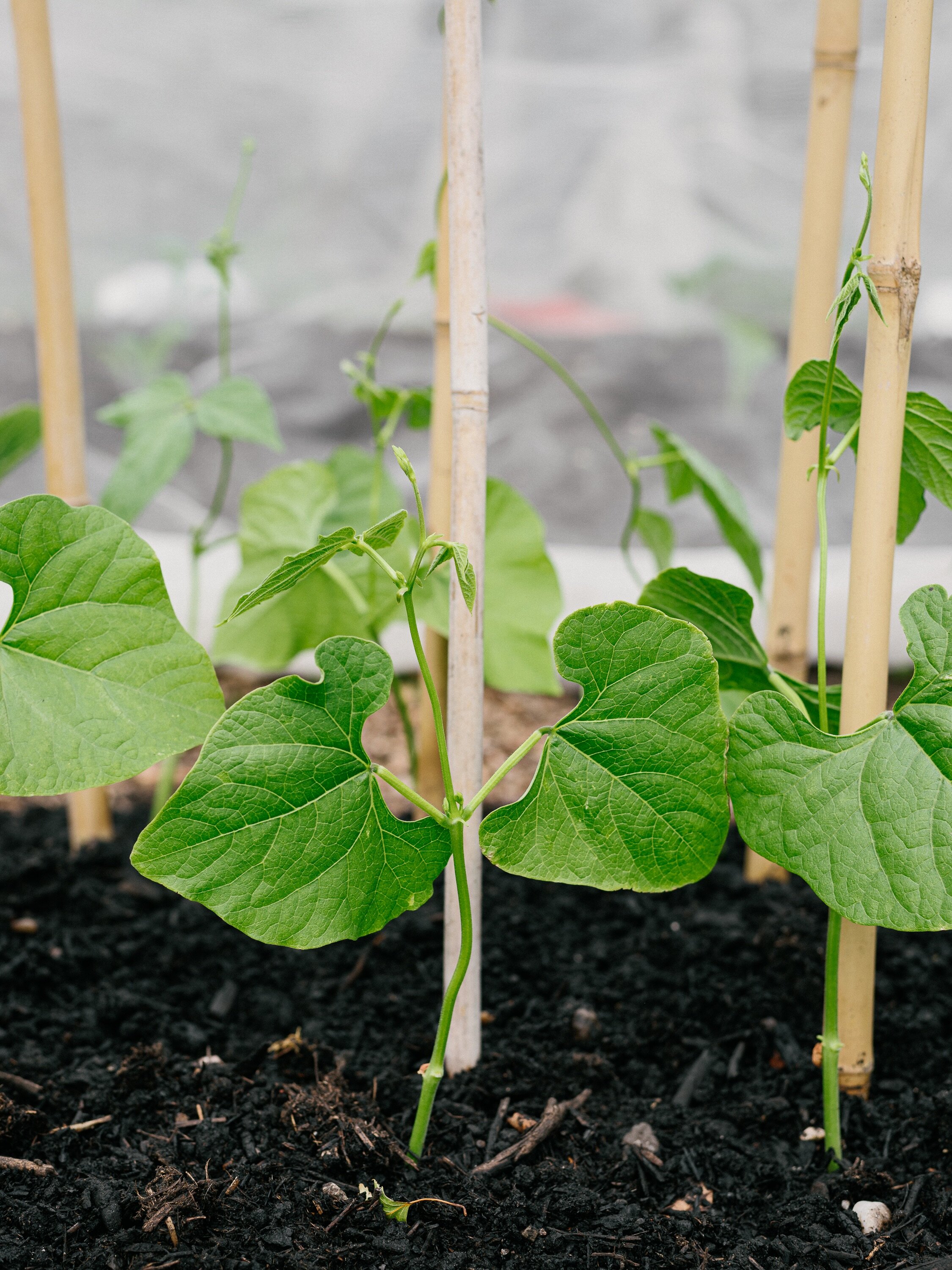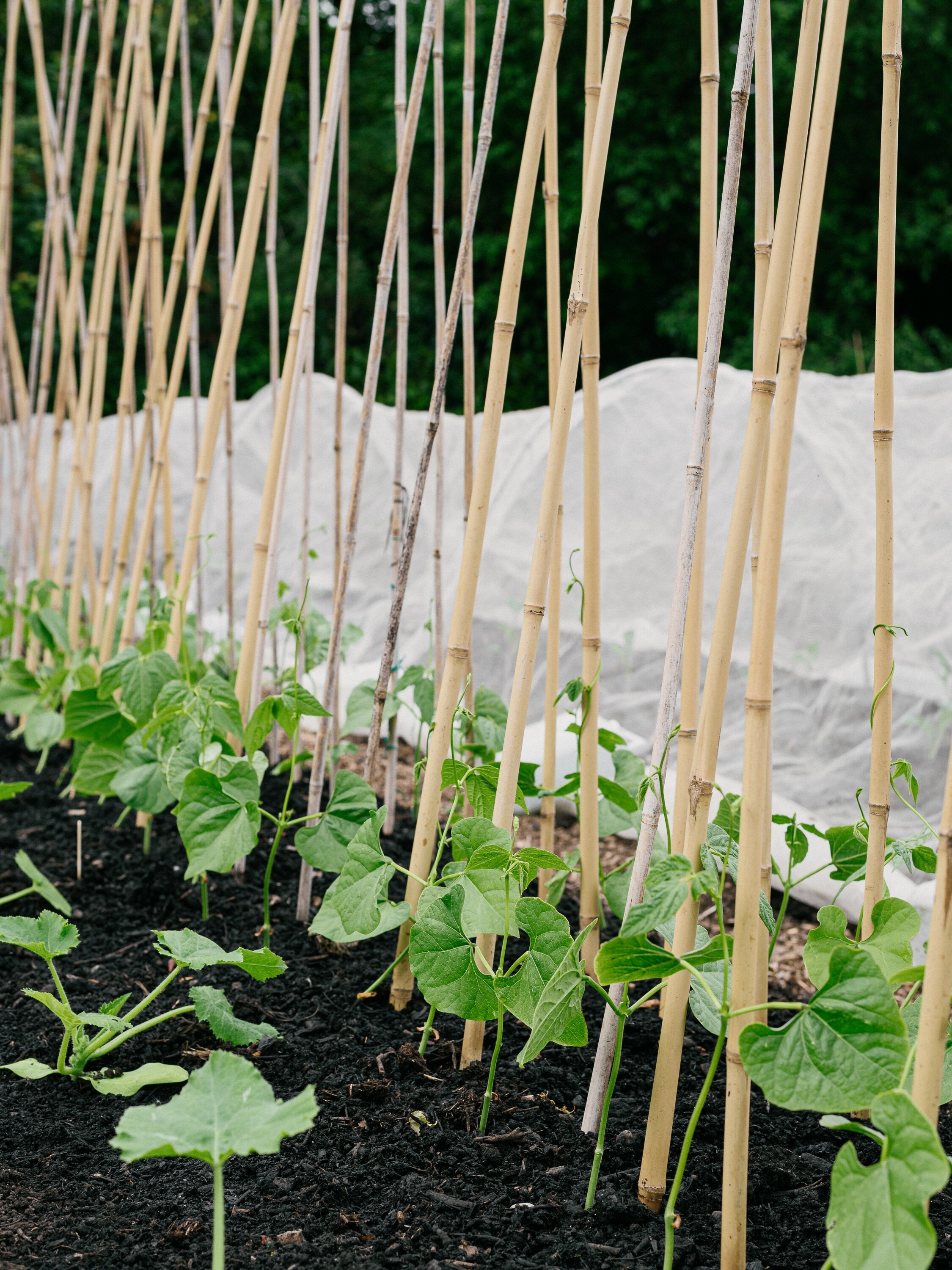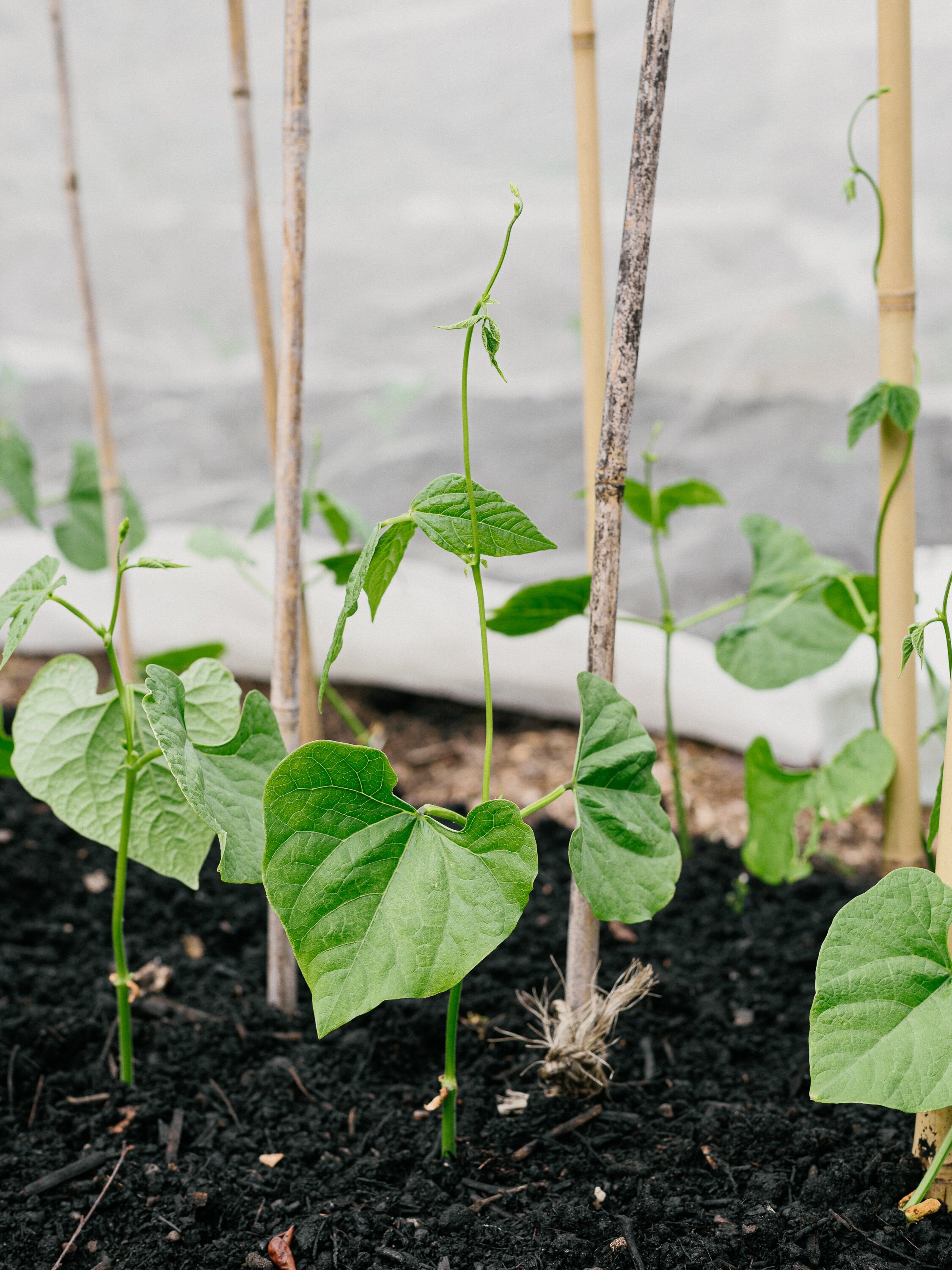A Growing Community
Rhiannon Davies explores how Govanhill residents are getting their hands dirty as they work to transform urban spaces into community growing plots
By Rhiannon Davies
Photos by Virginie Chabrol
Last year, when lockdown narrowed horizons, supermarket shelves emptied and food scarcity fears heightened, many started growing their own food for the first time. In Govanhill, where tenement living is the norm, this meant experimenting with pots in backcourts and planters on window sills. It also provided a useful new hobby to fill the time. But public interest in growing food started before lockdown kicked in and has itself been growing apace ever since.
Tenements are packed cheek by jowl rising from land which was once home to Dixon’s Blazes
Despite the glorious green expanse of Queen’s Park, Govanhill does not initially conjure images of fertile fields. Tenements are packed cheek by jowl rising from land which was once home to Dixon’s Blazes, the ironworks whose furnaces were landmarks here in the 19th and early 20th centuries. Yet if you look closely, you can still see pink radishes pushing their way out of the soil in front gardens, herbs cascading from planters, tomatoes blushing in tenement windows.
Growing is happening on a larger scale too. Back in 2013, Locavore and South Seeds took on the overgrown tennis courts belonging to the Queen’s Park Bowling and Tennis Club. A market garden is now well established, supplying the Locavore shelves as well as other organisations. A workers’ co-operative, Tenement Veg, rents some of the land using it to grow vegetables and promote healthy and sustainable food. Each year, South Seeds support around 24 local people to ‘adopt a bed’, allowing many city-dwellers to try their hand at vegetable growing for the very first time.
Food growing in Scotland also introduces people who dabble to the delights of kale
Lucy Gillie, general manager at South Seeds says it’s about more than what you produce: “Once you start growing your own food, you get a much better idea of seasonality of what you eat – when seasons start, what you would be growing or harvesting at what time of the year. People know to look out for beans in mid-late summer. They have a better idea of how weather impacts food growing and what can be grown in this country. Food growing in Scotland also introduces people who dabble to the delights of kale.”
The industrial history of Govanhill means that she doesn’t advise people to grow food directly in the ground, recommending building raised beds instead: “A lot of the tenement courts were infilled with industrial waste. Chromium was used a lot. It is an incredibly toxic metal and the cost of getting soil tested is huge.” For those interested in building their own raised beds, tools can be borrowed from the South Seeds tool library and instructions are provided by them too.
In some instances, self-styled guerrilla gardeners are transforming the smallest of spaces
Although traditional allotments do exist in Glasgow, waiting lists are several years long and the demand for them has increased significantly throughout the pandemic. This is where various community groups are stepping forward and seeking to take over unused space. In some instances, self-styled guerrilla gardeners are transforming the smallest of spaces, planting in verges and seed-bombing wastelands.
One group of wannabe growers got tired of waiting for an allotment and decided to form The People’s Plot to try and get access to their own piece of land to grow food on. Speaking about the project, group member Euan McLaren said: “We believe that everyone who wants to grow should be able to do so, and so we are working together to gain access to local land for food growing to support our ambitions of self-sufficiency, lowering carbon emissions, community wellbeing and supporting positive mental health.”
The group have now been granted space in Pollok Park, but they see this as only the beginning. They plan on continuing to organise, develop and campaign for access to local land to grow food. They also want to empower others to collectivise and take action.
So many plots sit empty and it’s a real shame when you think about how many people want to grow.
According to Euan, there are a number of steps that could be taken: “Firstly, more allotment associations should be opening up their plots to community groups. The current model with waits of over ten years is not sustainable. They need to remove the barriers to people getting involved. So many plots sit empty and it’s a real shame when you think about how many people want to grow. Secondly, the city council needs to stop granting planning permission to greedy developers who often go on to build unaffordable housing – like we are seeing with the situation in Agnew Lane. The council should be investing in its communities who could, and often are, using the space for growing food. Thirdly, we need to change the way we think about our food and where it comes from. From an environmental perspective, growing food locally is the future, so why wait? Why not sow the seeds now?”
This struggle brings the conflicting values of local residents and property developers into stark contrast.
The plot in Agnew Lane has been the subject of a local row over land use. Originally developed as a community garden by South Seeds, it was bulldozed by the land owners in 2013 as part of a move to build flats in the space. But it has lain empty ever since, and in the past year community groups have once again been growing food here. The same developers have now returned, attempting to build over the garden. On 10 June, the council issued a temporary stop notice, ordering a pause in construction until 8 July.
This struggle brings the conflicting values of local residents and property developers into stark contrast. In a densely populated urban environment like Govanhill, where private gardens are a luxury, space to grow is highly prized and sought after. For those who have the opportunities to get their hands into the soil, the rewards are plentiful. Back at the Urban Croft, one grower explains what it means to them: “I love living in Govanhill, but the lockdown has sometimes made me feel trapped here and really made me long for outdoor space. I know it isn’t much, but being able to grow – and eat – my own produce has given me a taste of ‘the good life’. And more than that, it’s made me feel part of the growing community.”
For more examples of how communities have taken over derelict spaces and how you can follow their lead, visit MyLand.Scot, a new website set up by the Scottish Land Commission which aims to connect the public with land, how it impacts work and employment, and can empower communities.



